Review of Critical Core, an accessible tabletop RPG focused on growth
Note: This post may contain affiliate links. At no additional cost to you, I may earn a small commission from purchases made using them. TTRPGkids uses this to keep the site going. Read full disclosure here.
Jump to:
- Age and skill target
- Setting
- Characters and character sheets
- Mechanics and key features
- Overall
- Find a copy!
Age target and skill target for Critical Core: 9+
Critical Core by Game to Grow is rated for ages 9 and up and includes both a system and a set of premade adventure arcs for the game.
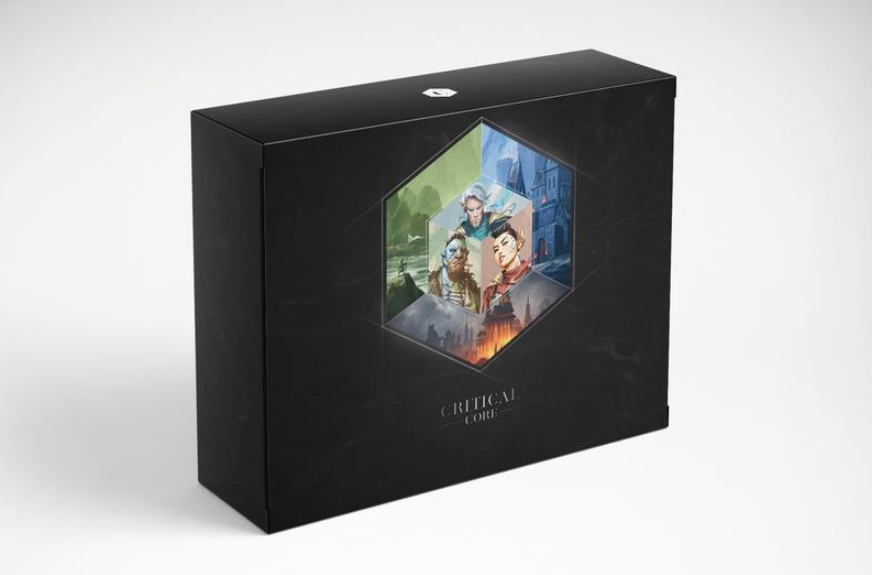
There is reading and mechanics comprehension required in order to play, but it is formatted and adjusted from D&D 5e mechanics to be more readily accessible to players of all ages. Character sheets, spells lists, and general rules are adjusted to make them more clear and understandable by means of creating an intuitive format, adding symbols and pictures to assist with quick look-ups, and having pre-made materials to remove some of the heavy reading entry barriers that you’d see from larger TTRPG’s.
The premade adventures that come with Critical Core are age appropriate and, like with any other tabletop RPG, can be adjusted to fit your players’ needs if you are playing with a younger group or want to adjust the difficulty. It even has a quick guide on each scenario sheet on how to make encounters faster/slower and easier/harder to fit your group better.
Critical Core is highly adjustable to your group and definitely would be appropriate for 9+ or possibly much younger depending on your players and any adjustments that you make.
Setting for Critical Core’s adventures:
The pre-made adventures that come with Critical Core are set in a familiar fantasy setting with ancient dragons, magical wizards, special celebrations, attacking skeletons, and more. It captures the epic adventure feel of classic tabletop RPG settings as your party explores across the map of Toverus to uncover secrets and save everything from town festivals to the entire world.
The game includes world, town, and encounter maps that are all designed for your group’s epic quests and cards with artwork of NPC’s and creatures to help with visually setting the scene. There’s also scripts for the game master (GM) and mood queues at the top of each scene page to quickly describe each area and capture the tone of the encounter so you can run an effective game session.
The setting and feel of the game are well thought out with tools incorporated into each page to help the GM and players capture that feel consistently and more intuitively.
Critical Core’s characters and character sheets:
Critical Core comes with 8 pre-made characters to facilitate quick start up and reduce the learning curve required for jumping into a large tabletop RPG while still offering freedom of choice. Players still have a section for filling in unique backstories and adding their flair, but the stats, abilities, etc are already arranged to so you hit the board rolling.
Critical Core‘s pre-made sheets come with several features including:
- Vertically aligned status with symbols and reduced numbers
- Pre-filled stats
- Notes on when to use certain numbers (ex: initiative marked under DEX)
- Ability and proficiency list with examples
- Bullet points of special abilities with pictures (ex: two swords for extra attack)
- A level up guide
- A spell list with spell details
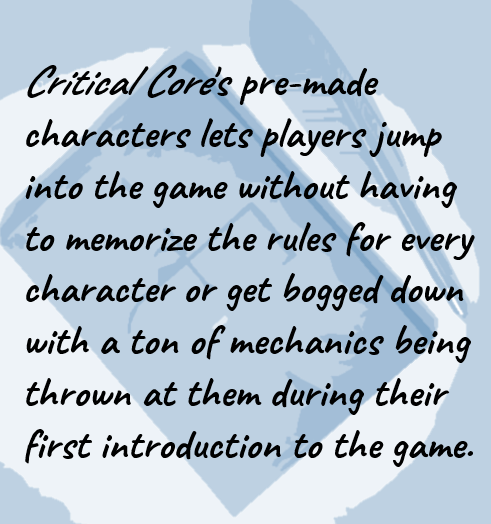
Critical Core‘s pre-made characters lets players jump into the game without having to memorize the rules for every character or get bogged down with a ton of mechanics being thrown at them during their first time playing. The reference lists for spells and abilities including mechanical details also means that there’s no flipping through a giant tabletop RPG core rules book to look up spell information all the time – everything is right there on one page. Symbols, pictures, and bullet points also help with quickly referencing and remembering where to look for certain elements on the page and with recalling what types of abilities are available.
I also want to note, there is a very cool decision tree included in the guide to help players who are having difficulty deciding which of the 8 characters to pick. It walks through what you want your character to be able to do and how you want to portray them in order to both help with the decision making process and with showing players unfamiliar with tabletop RPGs how different types of characters might play.
Critical Core’s accessible mechanics and key features:
For Critical Core players
No player’s guide needed:
The first thing that struck me when I started reviewing Critical Core was that there was both a game master’s and a facilitator’s guide, but there was no player’s guide.
The game is set up so that players don’t actually need a player’s guide – their character sheets have everything they need, so a separate manual isn’t required. This significantly reduces the mechanics and reading barrier, and makes it much easier for first time players to participate.
Spell points instead of slots:
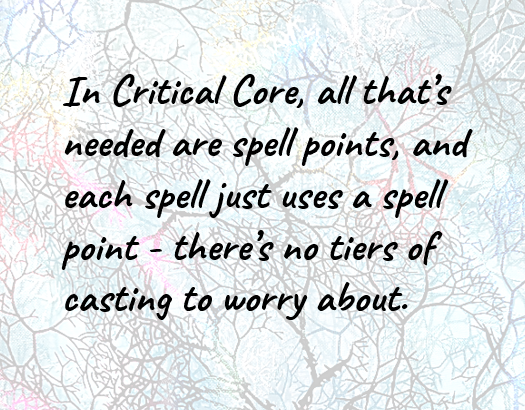
In many other tabletop RPG’s, D&D included, there’s different spell slots, different levels of spells (with levels that are different from player levels), and rules about casting at these different spell levels.
In Critical Core, all that’s needed are spell points, and each spell just uses one single spell point – there’s no tiers of casting to worry about. Spells do have levels, but the levels are the same as your character level with new spells unlocking as you gain experience. This makes for more intuitive spell usage while still sticking with the mechanical spirit of spell casting in other games. The terminology is less confusing, and it’s clear that 1 spell = 1 spell point to cast without requiring a bunch of additional explanation.
Ability and spell cards for easier tracking:
The Critical Core kit comes with character specific ability and spell cards that are aligned with what’s on the pre-made character sheets. This give players another option for how to organize their materials during game play.
The cards are color coded to each character class and are also symbol coded to each ability or spell (connecting a picture to something is a great way to remember what it does). They also include an explanation of what the action is and how to use it, so everything that you need to play is in one place.
For Critical Core’s game masters (GMs)
Clear diagrams and examples:
The Critical Core GM guide has a ton of awesome diagrams and examples that break down:
- The roleplaying cycle
- GM/player roles
- Encounter, session, and campaign relationships
- Social, combat, and exploration encounters
- Stats, crits, advantage and disadvantage, weapons, armor, magic
And there’s a ton more – my point is that a lot of attention was paid to making Critical Core‘s GM guide accessible as well. It’s design to walk a first time tabletop RPG player through the core of what this game is and the GM role or for an experienced player to fluidly gain a deeper understanding of the game and their new position.
The DOTS system for dynamic encounters:
Critical Core has created an awesome system for building meaningful and interesting encounters called the DOTS system (which stands for desire, obstacle, tactic, and so then…). DOTS gives a structure for creating encounters that is also very flexible to any situation – every encounter has a desire (or motivation), obstacle, tactic (or method), and so then… (the result/what’s next).
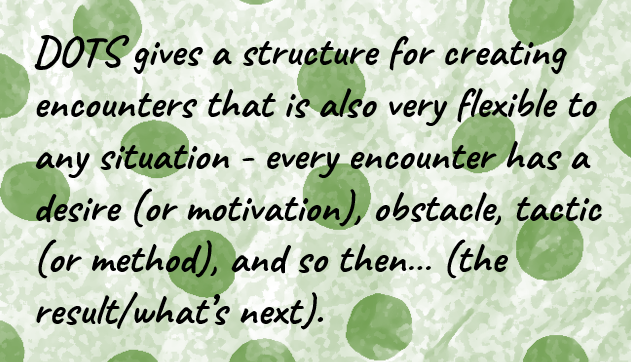
The DOTS system is a great process for giving a format to any homebrew created using Critical Core. Every scene in the premade modules uses and shows this sequence as well, so there’s familiarity from encounter to encounter even as the situations change.
Formatted encounters for GM accessibility:
I just mentioned that each encounter in Critical Core’s premade modules uses and shows the DOTS system, but they also do a lot more. Each encounter fits in a single page, so everything is easily accessible in one view for the GM. There’s no looking up stats and spells and maps and more in the middle of each encounter; everything is already right in front of you.
Symbols at the top of the page show the type of encounter (RP, exploration, or combat), the tone, and what core capacities it focuses on (more on this in the facilitator section). The page also has the DOTS outline, a script and details, creature or NPC stats, and tips for running the encounter in an engaging manner. Additionally, there is a quick reference with suggestions for how to make the encounter longer/shorter or easier/harder on the fly depending on what you and your players need for that game session.
As someone who is primarily a GM, I LOVED Critical Core‘s quick reference. I often have to set this up on my own for games, and it can be very time consuming, so having it 100% ready to go without needing to look up any separate sheets or pages mid-encounter is a blessing. For new GM’s, this is also a fantastic introduction to GM’ing and getting used to the set up without having to create and piece together everything from scratch, but it still offers GM freedom to decide on how to adjust the length, difficulty, etc of the encounter.
For Critical Core’s facilitators
Explaining progression, growth, and goals:
The difference between the GM and the facilitator is that the GM is actively in the game and running the story, whereas the facilitator is creating the space and presenting Critical Core as a tool for the players. Sometimes, the facilitator may also be the GM, but, other times, they may be separate from the game as one of the players takes the GM role. The facilitator could be a parent, a teacher, a therapist, a group mentor, etc.
To help with that unique type of leadership role, Critical Core has a manual just for the facilitator. This goes beyond the game mechanics (that’s what the GM guide covers) and gets into the benefits and goals of the game. It covers how to use DIRFloortime and the development ladder and shows how the game will help with progressing from co-operative play (working towards the same goal) to collaborative play (working TOGETHER towards the same goal). It breaks down each of the core capacities that the game aims to help with and how each encounter is marked to focus on a specific one of these skills.
To me, this is a BIG feature of what sets Critical Core apart from other games – it goes well beyond just updated mechanics and modules to dive into how this relates to life outside of the game.
How to get buy-in from parents and therapists:
Another cool part of Critical Core’s facilitator guide is how to gain interest from players, guardians, therapists, and others who would be involved in the game-joining process. I’ve seen a lot of questions and tips from facilitator who are trying to get other parents to let their kids play in a tabletop RPG, so having a guide built into the game is a fantastic way to help guide others with confidence to join the group and convince them of the benefits of gameplay.
Using the check-in and check-out method:

When I’ve previously chated with Miranda from World of Corde, she had mentioned that her family uses Game to Grow’s check-in and check-out method for their game sessions, and it was really cool to see the explanation for that in Critical Core. It’s a way to encourage players to communicate and get to know each other and their characters as the game starts and a way to wind down at the end of the game to transition back into “the real world” after all the excitement. It also creates a repeatable process to make the start and end of each session something familiar and manageable, regardless of how different and chaotic game play may have been.
Overall impressions of Critical Core:
Critical Core is an amazing game and tool. It’s easier to understand than other TTRPG’s of its size with attention to detail for everyone involved.
The modules that Critical Core comes with are engaging for players and laid out for ease of use by the GM. It explains all the behind-the-scenes work for the facilitator to understand what this game can really be for people. I was continually impressed as I explored through the game’s content – the updated character sheets, the clear diagrams and examples, all of the tools incorporated into mechanics – everything is set up for an awesome and accessible gaming experience.
Where to find a copy of Critical Core:
Critical Core can be found here on DriveThruRPG!
And check out my interview with Adam, one of Critical Core‘s designers as well to get more background on how this game came to be.
Please let me know in the comments if you have any questions, try the game because of this post, or have played this game before!
Also make sure to subscribe to the TTRPGkids monthly newsletter to stay up to date on the latest reviews, tips and tricks, game and podcast list updates, and more! Thank you for playing tabletop RPGs with your kids and sharing this awesome hobby with the next generation!

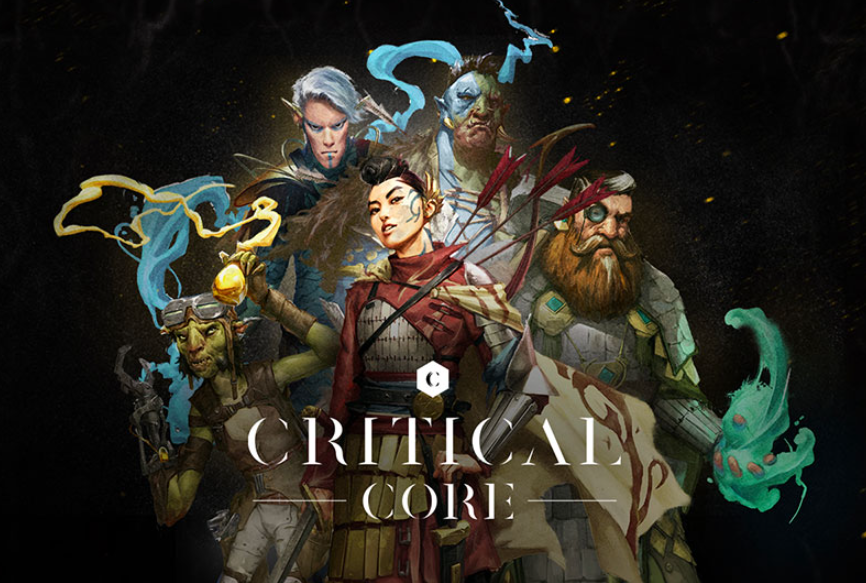
Critical Core has been my favorite to use with my SPED students. It has an easy to follow design and my students cannot wait until the next session.
That is awesome! I’m very glad you’re using this with your students, and thank you for giving them this wonderful resource.
Hi there! I am an LCSW who works with kids. I love all the adult reviews here– but I’m curious about what the KIDS think. Is it “cool” enough for them? Is it a problem that it’s not actually D&D?